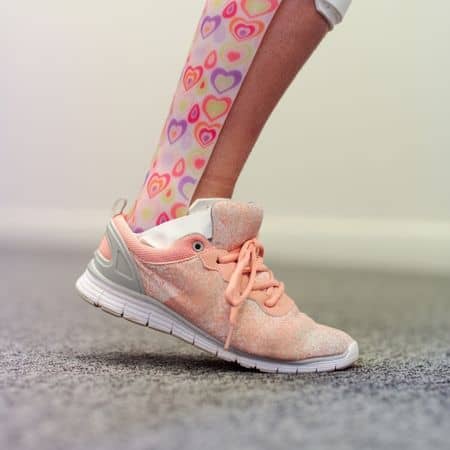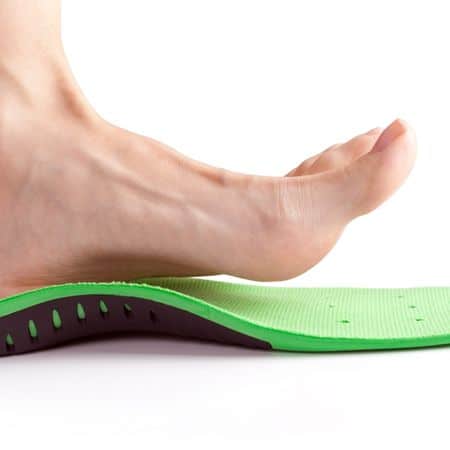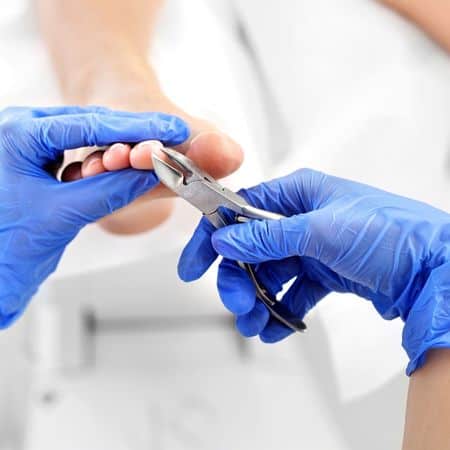Podiatrists have extensive training in lower limb medical conditions that they are able to help patients with. If you are asking the question: “how can podiatry help me with my disability?”, the answer is: in countless ways!

Seeing a podiatrist can provide comfort for patients with knee, foot or ankle pain as a result of their disability. They are able to help in early diagnosis and prevention of conditions that could potentially result in further disability. They also conduct general foot and toenail maintenance for patients who are unable or struggle with foot care maintenance themselves. Thankfully Podiatry is an NDIS approved service so you can include it in your plan.
Below are a few of the many conditions that our podiatrists commonly treat.

Bracing AFOs/Richie braces
Bracing and Richie Braces can be used for a wide variety of disorders ranging from stroke to cerebral palsy. A podiatrist is able to prescribe and cast for these devices. They can greatly improve the quality of life for patients with these disabilities. See the example below.
Cerebral Palsy (CP)
CP is a congenital disorder of movement, muscle tone or posture which occurs due to abnormal brain development prior to birth. A podiatrist can identify this in early childhood via various testing of reflexes, strength, range of motion and muscle tone. Symptoms can include rigid limbs, floppy limbs, a very uneven walking pattern and over exaggerated reflexes. Depending on the type of CP, a podiatrist can assist the patient’s ambulation. We do this by making ankle foot orthoses (AFOs) or Richie Braces. These help correct the lower limb and allow the patient to walk more easily.

Orthoses/Orthotics
Orthoses/orthotics are used for a variety of medical conditions and are of particular importance for offloading and assistance with walking. If your disability has resulted in fatigue and difficulty walking then a podiatrist might want to prescribe orthoses/orthotics to help you be able to walk more comfortably with less effort. See the example below.
Charcot Marie Tooth (CMT)
CMT is a degenerative nerve disease affecting the arms and legs. This results in the damaged nerves being unable to make certain muscles work properly and a loss of sensation in the feet. By being unable to use these muscles they then begin to waste away which results in deformity of the feet. Typically CMT presents in adolescence with a patient noticing extremely high arches and a stork-like leg appearance. It is imperative that these patients see a podiatrist and pedorthist for custom footwear and in shoe offloading as well as regular debridement of callusing in high pressure areas to prevent ulcerations which can lead to amputation and worst case death.

General Foot Care
General foot care is available to anyone who has difficulty maintaining their foot hygiene, such as cutting nails or who suffer from high pressure areas (callusing).
There are a number of disabilities that require this service. The vision impaired are unable to see their feet to conduct foot care safely. Intellectual disabilities can prevent understanding, or cause a person to forget how to correctly maintain their foot health. Foot care tasks can be impossible with motor disabilities that result in tremors, shaking or the inability to use one’s hands. As well as physical disabilities which prevent someone from reaching their feet.
Your friendly local podiatrist will gladly provide this service for you and yes it can be covered through NDIS.
So, how can Podiatry help me with my disability?
If you require any of these services the NDIS can help as Podiatry is an approved support. So if you think you may benefit from some of these services then book an appointment with your local Advance Foot Clinic podiatrist to start improving your function and quality of life.
Contributed by Podiatrist Mark Little

